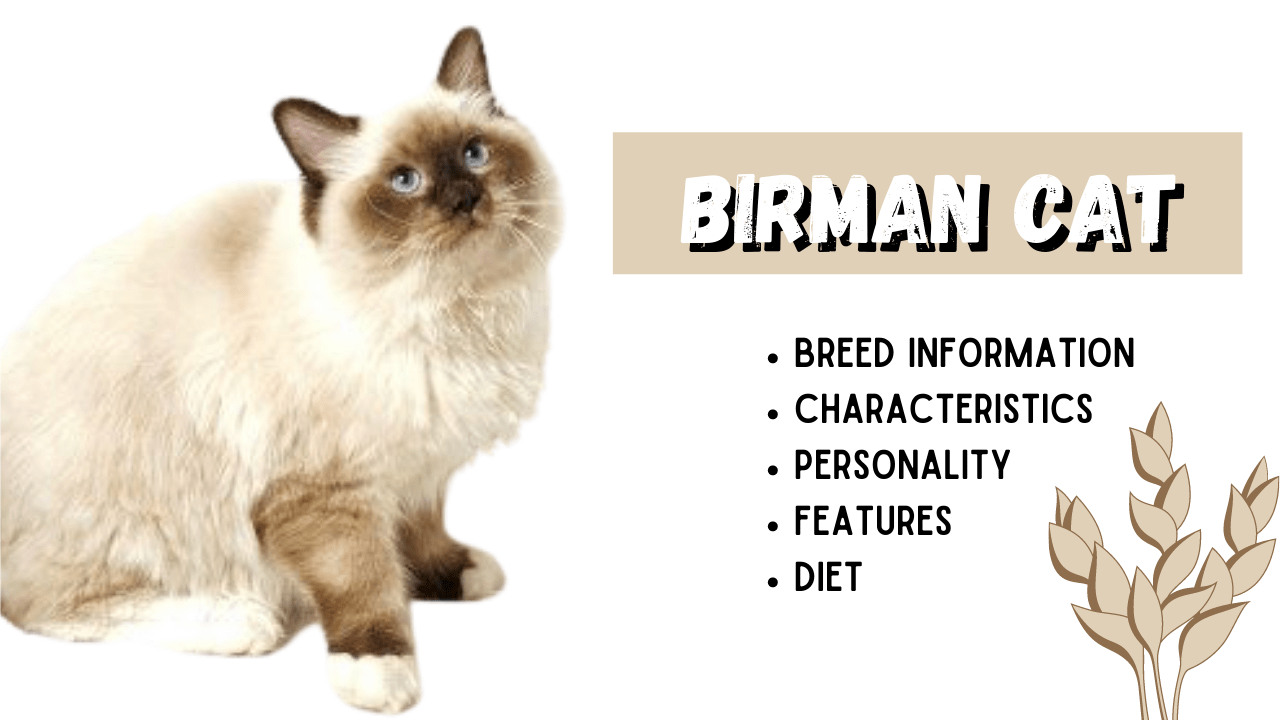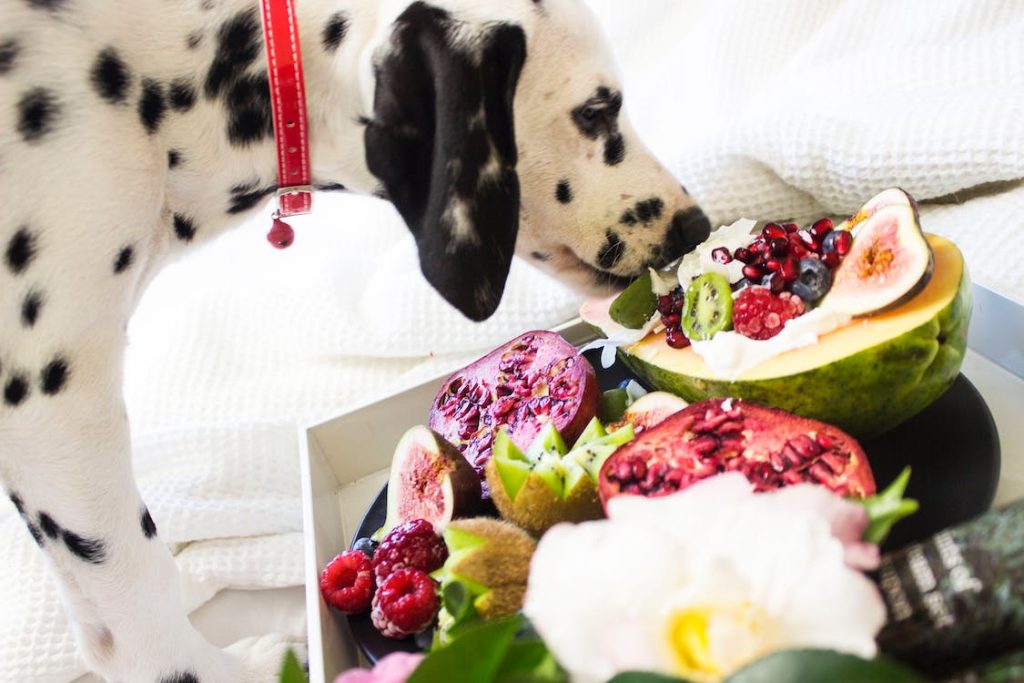
The fluffy cats are liked by almost everyone as they have a sweet appearance and a soft touch. A cat with fluffy soft and silky coat, deep blue eyes, and point coloration becomes more appealing, like the Birman cat. It is considered as a Burman breed, with docile temperament and affectionate nature. With a mysterious historical background, this cat breed is also known as the sacred cat of Burma.
History of the Birman Cat
There are a lot of stories and tales related to the origin of the Birman cat breed. One logical and mostly acceptable story says that the Birman cats had their origin in Burma where they lived in temples and were taken care of by the priests. Once those temples were defended by the French army, and a pair of Birman cats were given to the French soldiers as a reward.
In this way, the first Birman cats entered Europe. The name of this breed is derived from a French word, Birmanie, meaning Burman. The first breed of Birman cats settled in Mme Leotardi, in Nice, France in the year 1920. This breed was recognized by the Cat Club de France in 1925.
By the end of World War 2, the breed was about to vanish out with only two Birman cats left. These two cats were heavily crossed with the Siamese and Persian cat breed to save the Birman cat breed and give it a rebuild.
After a successful crossing, pure Biman cats were produced once again in the 1950s. This crossed breed of Birman cat was first recognized by Britain GCCF in1965. Later, Cat Fanciers Association CFA of USA recognized it in 1967. The International Cat Association and Canadian Cat Association recognized the Birman cat breed in 1979.
Height & Weight
The Birman cat is a medium to long cat breed with 15 to 18 inches long and weighs about 6 to 12 pounds.
Life Span
The expected life span of a Birman cat is 12 to 16 years of loving companionship.
Body Features
The Birman cats have a strongly built elongated body that is neither stocky nor svelte. They have a distinctive broad and rounded head with a strong skull. The forehead is a little sloppy, convex, and flat. They bear a Roman-like slightly convex nose, medium length ears with rounded tips, and rounded eyes. They have large and heavy legs with large and rounded paws. The tail is medium and fluffy.
Eye Colors
The rounded eyes of Birman cats with sweet expression and innocence have a deep blue color.
Coat and patterns
The Birman cat has a silky long coat that is heavy around the neck and gives a fluffy soft appearance to this cat breed. The fur does not mat and tends to curl at the stomach.
The Birman cat has a coat with point coloration, inherited from its ancestor Siamese. The kittens are born pure white and start developing point coloration after 1 week or 10 days of birth.
The face mask, ears, tail, and legs are the strong spots of point coloration. The point coloration follows the standard or Lynx pattern.
Colors
The body has an even color and the paws are pure white often with a spot of point coloration. The body color has a strong contrast to the point colors like chocolate, seal, tortoise, red, lilac, cream, and blue.
Personality & Temperament of the Birman Cat
The strong affection and dignity are the attributes of the Birman cats that make them loveable by most of the people. The Birmans are highly gentle, loyal, and playful cats. They are mostly known to be people-oriented cats that follow their owners from room to room and keep observing their activities keenly.
They love to be padded, held, and sit in the lap. They usually welcome new people with curiosity and never get afraid of strangers. The Birman cats are usually docile with a sweet low voice. They are very intelligent and smart cats and are curious as well. They have a grateful temperament and do not act like a bossy cat.
The Birman cats are fond of exploring their surroundings and often get themselves into trouble. The owner needs to keep an eye on their activities all the time and they cannot be left alone.
Health Problems of the Birman Cat
The Birman cat is a mixed breed hence it is prone to the diseases that its ancestors might have developed at any time in their life.
Congenital Hypertrichosis
In this disease, a kitten is born with any hair on its skin. This disease can also lead to an immune deficiency, thymic aplasia which can be fatal in rare conditions.
Hypertrophic Cardiomyopathy
This is an inherited disease for the Birman cats which is one of the most common heart diseases of cat breeds. It affects the functioning of the heart and its circulations. HCM can result in sudden heart failure leading to death.
Corneal Dermoid
It is the ailment of eyes in which skin and hair start growing over the surface of the cornea and affect the vision. It can be corrected through surgery.
Spongiform Degeneration
This is a progressive degenerative disease in which the hind limbs become weak and the cat faces trouble in movement.
Nutrition of the Birman Cat
The Birman cats go well with the normal cat food with plenty of water. The dry or wet both cat foods are fine. Birman cats love to eat and thus, are prone to obesity. So, just make sure not to overfeed your cat to keep it healthy, active, and in good shape.
Care of the Birman Cat
The Birman cat is easy to keep as compared to other cat breeds. A little more care and attention can keep this cat breed happy and energetic.
- To prevent the beautiful silky furry coat of Birman cat from matting, groom the coat twice a week.
- Make the Birman do exercise daily to avoid getting overweight.
- Frequent bath in spring, when the Birman cat sheds, can help remove the loose hair on the skin. A hand shower is better than a cat bathtub for Birman cats.
- Regular teeth brush, nail trimming, and ear cleaning will maintain good hygiene of this cat breed.
- Bring cat toys, cat house, mouse teasers, and other interactive toys to keep the cat engaged.
- The exploring nature of Birman cats can be dangerous for them. Try using cat-tabs to track where the cat is.
- A clean and tidy litterbox will be more frequently used by the cat.
- This active and wandering cat must be kept indoors to protect it from getting trapped somewhere, facing an accident, getting infected, or stolen.
Friendliness of the Birman Cat
The Birman cat is famous for its extremely affectionate and friendly nature. It behaves quite well with everyone, the children, other pets, and even strangers. It is not afraid of the dogs and strangers and welcomes them with curiosity.
It likes to play with children and other pet animals who treat it well with kindness and love.
Final Words
The Birman cat id an adorable cat with lots of affection and loyalty as a part of its personality. It is easy to keep and can be a wonderful companion for the people who feel alone and depressed. This lovely cat can bring happiness in the life of a lonely person.







